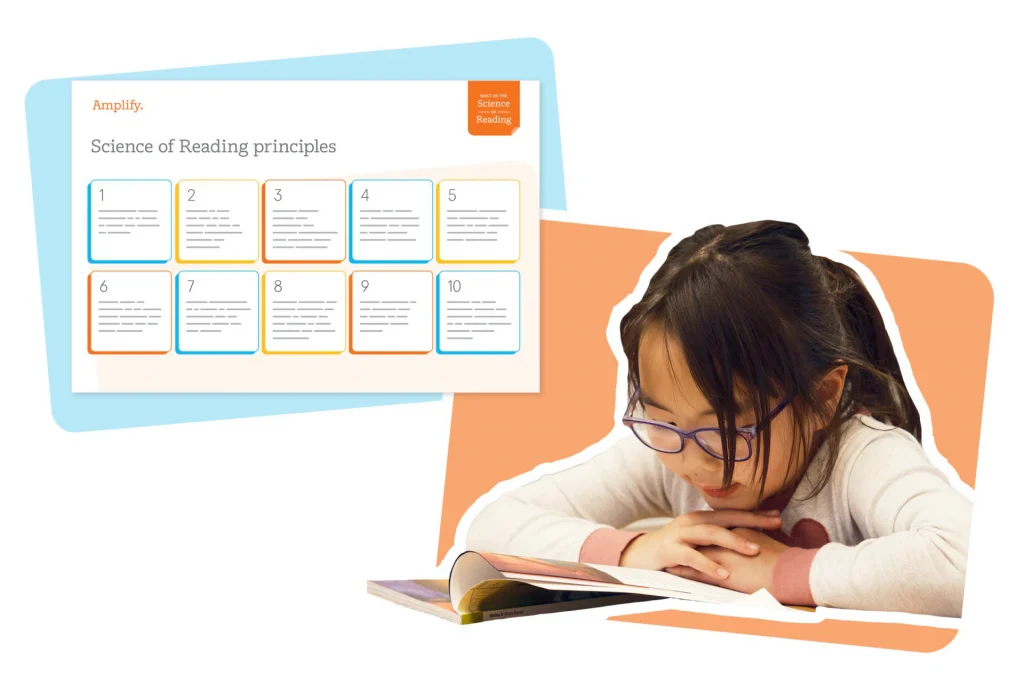
Our understanding of the natural world is grounded in basic truths or laws we call scientific principles.
And we’ve got a similar set of principles for the Science of Reading.
In science, we have things like gravity, buoyancy, and the laws of motion, while the Science of Reading has equity, vocabulary, background knowledge, and so much more.
These principles, which are grounded in extensive Science of Reading research, inform our understanding of how children learn to read and guide educators in implementing best practices for science-based, effective literacy instruction.
These principles can support you in bringing the Science of Reading into your classroom and fostering literacy success for all your students.
Let’s take a look.
Science of Reading principles
We’ve identified that touch on key Science of Reading components. Here’s a peek at the first five.
1. Science-based reading instruction supports all children, and is a matter of equity.
Every child deserves access to high-quality instruction that can help them become proficient readers. The latest National Assessment of Educational Progress (NAEP) data that students’ reading scores are slipping, with 37% of fourth graders performing below the NAEP Basic level in reading in 2022. Fortunately, we have the research and tools we need to get to work reversing this trend—and more and more educators are using them. Science-based reading instruction channels decades of research into teaching methods that match the diverse needs of all students. Using the Science of Reading, we can raise those scores and support literacy development for this generation and the next.
2. Reading and writing must be taught systematically, explicitly, and cumulatively.
Humans typically learn to speak naturally, through social interaction. But reading and writing require formal instruction. According to the Simple View of Reading, reading comprehension is the product of both decoding and linguistic comprehension. Kids must be taught the relationships between sounds and letters (phonemic awareness and phonics), and how to decode words. Systematic instruction presents these skills in a logical order, explicit instruction goes beyond just “exposing” kids to words and texts, and cumulative instruction builds on skills learned before. This structured approach is essential for laying a strong foundation in literacy.
3. Proficient reading requires word recognition and language comprehension, while proficient writing requires transcription and composition skills.
Proficient readers recognize words quickly and effortlessly, allowing them to focus on understanding the text rather than decoding each word. They are then able to comprehend language using a knowledge of vocabulary, an understanding of sentence structure, and the skill of meaning-making. Likewise, proficient writers possess transcription skills, including spelling and handwriting. And as in reading, these transcription skills eventually become automatic, allowing 国产麻豆剧to expend less effort on handwriting, typing, and spelling and redirect that energy toward creating text and sharing ideas.
4. Reading and writing are mutually reinforcing processes that should be taught through integrated instruction.
When 国产麻豆剧read a variety of texts, they absorb different writing styles, structures, and vocabularies, which also serve as models for their own writing. Writing about what they read also helps 国产麻豆剧deepen their capacity for both comprehension and expression. Integrated instruction might include activities like reading a historical novel and writing diary entries from the perspective of a character, or researching a scientific topic and creating an informative brochure.
5. Background knowledge and vocabulary are critical to both reading comprehension and writing composition.
Background knowledge is like Velcro to which new texts, and new knowledge itself, can stick. A robust vocabulary is crucial for reading comprehension, because it allows 国产麻豆剧to understand and engage with more complex material. In writing, a rich vocabulary lets 国产麻豆剧express their ideas more precisely and vividly. Integrated activities such as book clubs or writing workshops can build background knowledge, vocabulary, and the natural interplay between reading and writing, fostering a holistic—and science-backed—approach to literacy development.
You’re part of a larger community—one made up of educators and researchers invested in deepening our understanding of how kids learn to read and write, and how to bring those approaches into the classroom. Start every day inspired and grounded in this community with our Science of Reading principles placemat.

